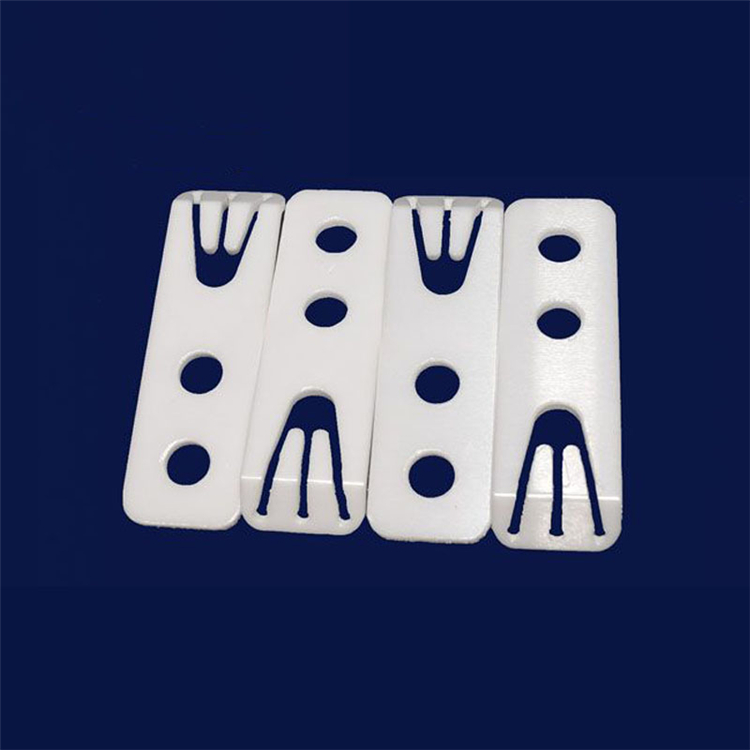2018 Zirconia Ceramics Machining And Molding Technology What Kinds?
Time: 2018-12-08 Writer: mingrui
Zirconia Ceramic Products Molding methods have dry pressure, grouting, extrusion, isostatic pressure, injection, flow delay and hot pressing molding and other methods. In recent years, the molding technology methods such as pressure filtration molding, direct solidification injection molding, Gel injection molding, centrifugal grouting molding and solid free molding have been developed at home and abroad. Different product shapes, sizes, complex shapes and precision products require different molding methods.

What are the most commonly used molding techniques for zirconia ceramics?
There are many ways to make zirconia ceramics molding, such as extrusion, injection, dry pressure, hot pressing and other molding methods, in recent years at home and abroad have developed a number of new molding technology, according to the different shapes and sizes of products to develop different molding methods.
Here are some of the most commonly used molding techniques:
Isostatic Pressure Molding Method:
When the initial forming pressure of isostatic pressure is small, the phase of powder particle migration and stacking is heavy. Medium-term pressure increases, powder local flow and shredding stage. When the pressure is maximum in the later stage, the volume of the powder is compressed and the stomata are discharged to reach the densification stage.
The characteristics of isostatic pressure forming are similar to the principle of isostatic pressing molding method, which is the axial pressing molding. Axial pressing molding is one-way or bidirectional pressure suppression, powder and mold friction is large, pressure along the direction of suppression will produce pressure loss, so that the density of the various parts of the billet is not uniform. The pressure of the liquid medium to be transmitted in all directions is equal when the isostatic pressure is formed. Elastic mold in the liquid medium pressure generated by the deformation of the powder, powder and mold wall friction is small, the billet force is uniform, density distribution is homogeneous, product performance has been greatly improved.
Grouting Molding Method:
This is the earliest molding technology of zirconia ceramics, the lower cost price is suitable for complex shape, large size of the workpiece. This molding method of zirconia slurry is usually used as a medium to add binder and gel, after grinding and then exhaust, and finally imported into the gypsum mold body. If it is hollow grouting, in the mold wall adsorption to enough thickness of the slurry, but also need to pour out the excess slurry, reduce the shrinkage of the billet, so try to choose the high concentration of the slurry.
Advantages of grouting Molding:
Strong applicability, no need for complex mechanical equipment, as long as simple gypsum mold can be molded, can produce any complex shape and large thin-walled injection, molding technology is easy to master, low production costs, billet structure is uniform.
Disadvantages:
The labor intensity is large, the operation process is many, the production efficiency is low, the production cycle is long, the gypsum mold occupies the field area is large, the injection piece water content is high, the density is small, the shrinkage is large, the sintering is easy to deform, the mold loss is big, is not suitable for continuous, automation, mechanized production.
Dry pressing Molding Method:
This molding technology is limited to workpieces with simple shapes with an internal thickness of more than 1mm and a diameter and length of not more than 4:1. Methods the single axial and bidirectional axial two kinds, press sub-mechanical chamber press and hydraulic press, there is a fully automatic and semi-automatic molding method. Among them, the maximum pressure of the press is 200MPA, each minute can produce about 15-50 parts of the workpiece, due to the hydraulic press stroke pressure distribution average, so in the filling powder differences, for the suppression of the height of the workpiece will produce different. The mechanical press is the opposite, it will be filled with the amount of powder and how much corresponding pressure, which is relatively easy after the end of sintering, the size of shrinkage, affecting the quality of the product. Therefore, in the process of dry pressure, the uneven distribution of powders is particularly important for filling, which has a great impact on the precise control of the size of zirconia ceramic parts manufactured.
The advantages of dry pressing molding are high production efficiency, less labor, low scrap rate, short production cycle, large density of production products, high strength, suitable for large quantities of industrial production; The disadvantage is that the shape of molded products has a large limit, high mold cost, low strength of the billet.

 Moble: +86 18122974730
Moble: +86 18122974730 Phone: +86 746 3386888
Phone: +86 746 3386888 Email: admin@cerampart.com
Email: admin@cerampart.com Skype: +86 18122974730
Skype: +86 18122974730 Wechat: +86 18122974730
Wechat: +86 18122974730